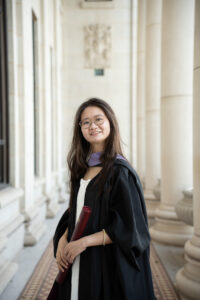Graduate students enrolled in related fields are encouraged to engage in activities with Texas AgriLife Extension’s Urban and Municipal Parks outreach programs. Limited assistantships and independent studies are available.
Limited assistantships and independent studies are available.
Students should have a strong interest in municipal parks and excellent project management skills. Assistantship and independent study projects emphasize applied learning in which research is conducted or utilized to create educational materials and technical reports that assist communities and constituents in addressing relevant issues. Students working with the program should excel at both applied research and the ability to translate science into meaningful, relevant outreach materials for our audiences.
Previous project examples include: conducting needs assessments; updating park and open space master plans; creating training materials and videos; analyzing program participant data; GIS mapping of zip code and policy data; and conducting case studies of alternative land management practices. 
Students involved with the program are highly encouraged to present their work at state conferences and educational workshops.
If you have additional questions or need more information, please contact us via urbanparks@ag.tamu.edu.
Current & Recent Graduate Students
Farzana Ahmed
Farzana Ahmed holds a Master’s in Urban Planning from Texas A&M University. Her research focuses on the intersection of equitable access to green spaces, health outcomes, and climate change adaptation in marginalized communities. This area of study aligns perfectly with her professional goals. She aims to advocate for environmental justice and public health equity policies. Analyzing the link between park access and climate adaptation will inform strategies for building climate-resilient communities. She has also worked with the Working on Wellness of Environment (WOW-E) program at Texas A&M AgriLife Extension Services, where she worked to develop sustainable practices for community wellness. Her work with Texas Target Communities also involved community development through community feedback. Her passion for integrating ecological research with practical applications drives her commitment to enhancing the quality and accessibility of urban green spaces for all community members. She strives to develop relevant, unbiased research approaches to support communities in park and trail planning, citizen input and engagement frameworks, community development, and park and open space policies
Yinglan Hao
Current Research:
Ms. Hao reimagines urban parks for the nocturnal realm, blending cutting-edge technology with spatial analysis to create dynamic, safe, and engaging night environments for underserved neighborhood parks. By analyzing visitor patterns through big data, Yinglan tailors designs to community needs, integrating adaptive lighting systems that reduce light pollution and energy use. This forward-thinking approach fosters inclusivity and sustainability, transforming parks into vibrant night-time sanctuaries for all.
Project Narrative
Facing the dual challenges of heat weaves and shifting societal rhythms, our landscape architecture proposal advocates for the transformative development of nocturnal parks. These spaces, designed for the night, cater to our evolving need for accessible, safe, and vibrant public realms after dark. Our methodology employs spatial analysis to identify urban areas most in need of these green sanctuaries, harnessing the power of big data to analyze parks on a granular level—yearly and hourly visitor statistics reveal nuanced patterns of use, guiding our design to meet real community engagement.
We propose a revolutionary lighting system, one that intelligently adapts to the dynamic life of the park. This system, sensitive to the density and movement of visitors, adjusts in real-time, offering a lighting solution that is both environmentally conscious and responsive to the diverse activities hosted within these spaces. By integrating such technology, we not only address issues of light pollution and energy conservation but also ensure our parks are welcoming to all segments of the community, regardless of the time.
This vision champions a symbiosis between technology and nature, setting a new standard for urban park management. It prioritizes inclusivity, adaptability, and ecological respect, presenting a future where parks are not just daytime retreats but integral parts of the urban nighttime fabric. Our commitment to a data-driven, user-centered approach in crafting these nocturnal landscapes marks a significant leap towards sustainable urban living, making our proposal not just a design but a blueprint for future cities. This approach underscores our belief that the night, too, belongs to the community, and our parks should reflect that inclusivity and vibrancy, making them the true sanctuaries of the urban night.
Jeongseup Lee
Mr. Lee’s research base is in landscape architecture and urban planning. His previous studies have focused on what environmental psychology factors impact how people use urban parks. His master’s thesis in landscape architecture studied how people choose their picnic spot in an urban riverside park. He employed a mixed-method approach combining on-surveys and behavioral mapping. Mr. Lee also conducted secondary analysis examining the proximity of residents to greenway in San Antonio, Texas for his master’s thesis in planning. For this study, he explored equitable access to the greenway utilizing GIS network analysis. This work received the Best Student Paper Award from American Academy for Park & Recreation Administration (AAPRA).
Current Dissertation Overview:
There have been many studies on the positive effects, behavioral patterns, preferences, and satisfaction of urban parks, but there has been little research on whether residents actually know what parks exist in their neighborhood and if they use them. Mr. Lee’s dissertation research employs secondary analysis of a local community survey to better understand causes of non-use and lack of knowledge of specific parks.

